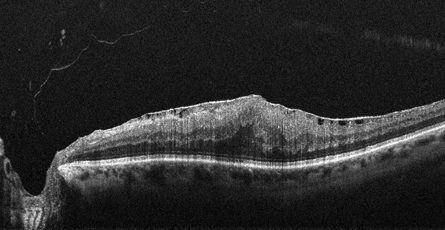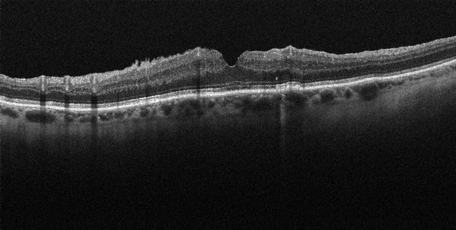What is an Epiretinal Membrane?
An epiretinal membrane (ERM) is a layer of scar tissue that grows on the surface of the retina, particularly the macula, which is the part of the eye responsible for detailed, central vision. The membrane causes a puckering that distorts the retina/macula and thus can distort the vision.
With age, the vitreous gel that fills the middle of the eyes starts to liquefy and collapse away from the macula (this is known as a posterior vitreous detachment). As this happens, the macular area can potentially be damaged and irritated. Such irritation causes cells to migrate and accumulate over the macula in an attempt to heal the area and a type of scar tissue develops. In addition to this, the scar tissue can contract and cause the macula to wrinkle or become swollen and/or distorted.
What are the symptoms?
An ERM usually causes distortion of, or decrease in central vision.
How is it diagnosed?
Dr Hilford will undertake a dilated examination of your eyes and tests such as optical coherence tomography (OCT) and/or fluorescein angiography will be required.
How is an ERM treated?
When symptoms are significant and troubling the patient, vitrectomy surgery is recommended to remove the ERM. If required, Dr Hilford will discuss the surgery with you in considerable detail. Some people are not necessarily bothered by distortion and find the symptoms quite mild. In such cases, ongoing monitoring is important as the ERM can progress further over time.







